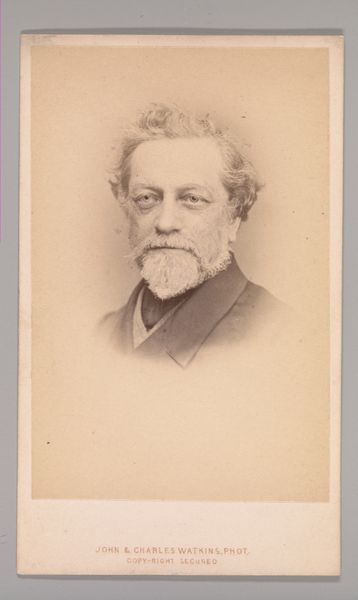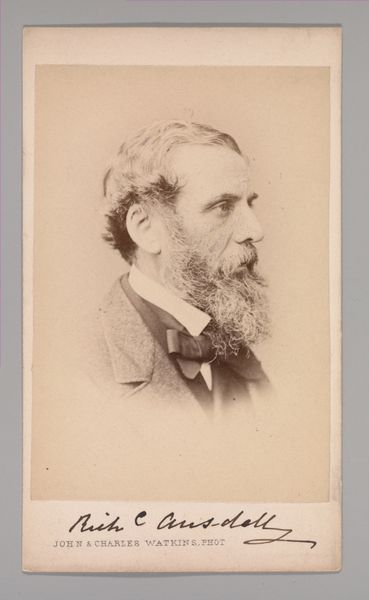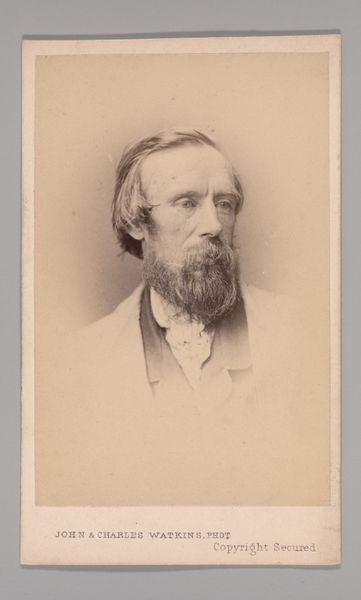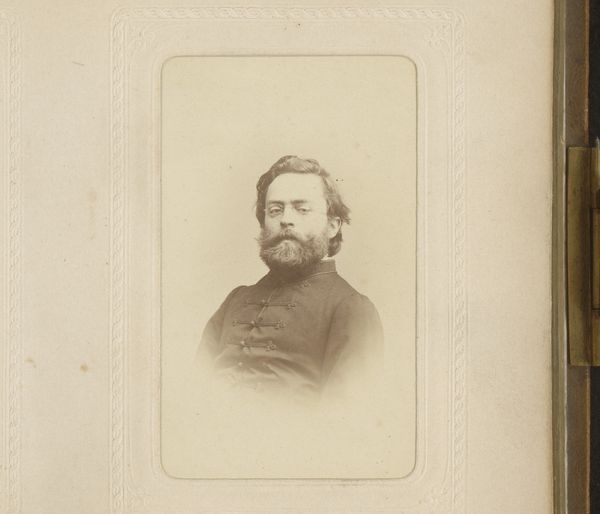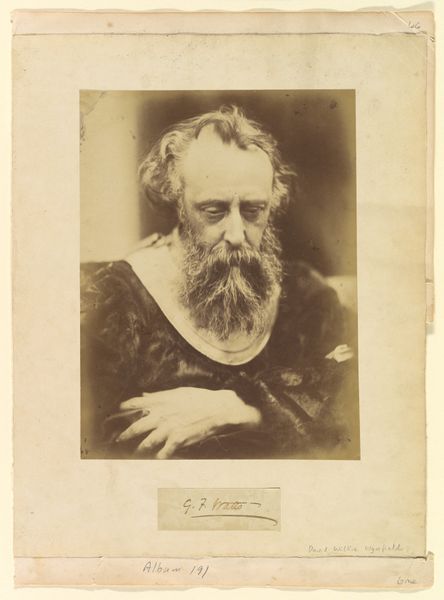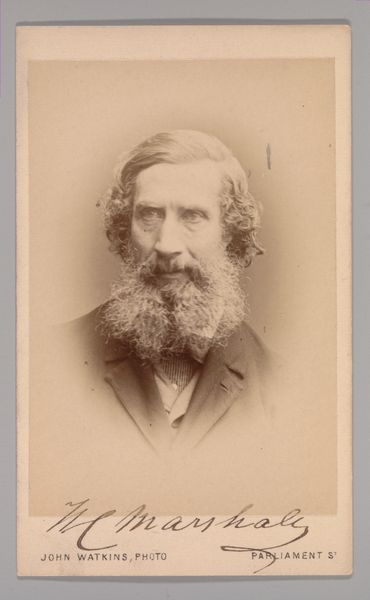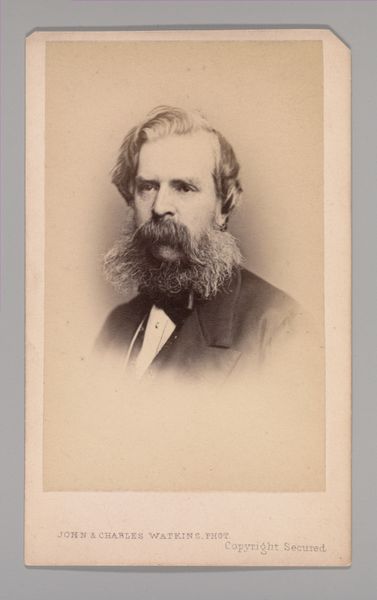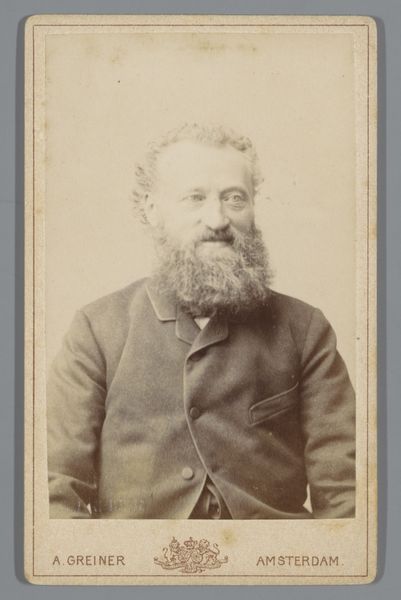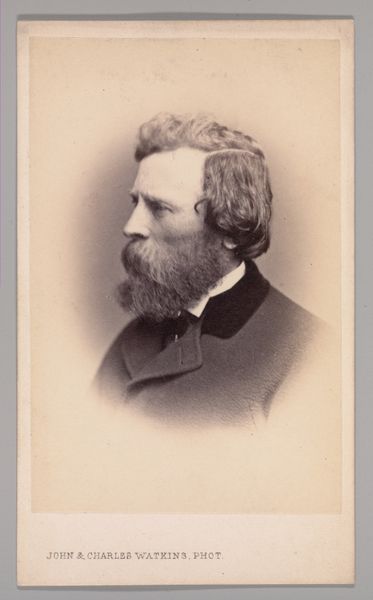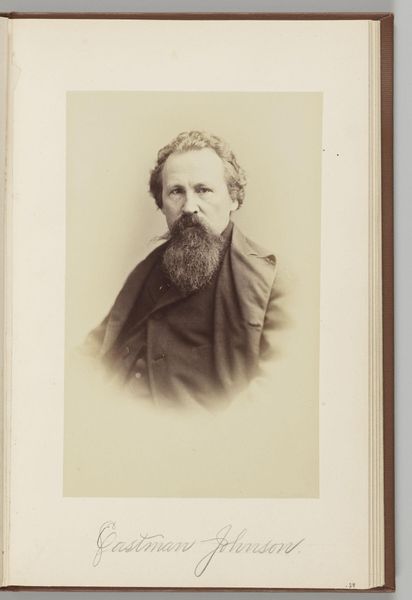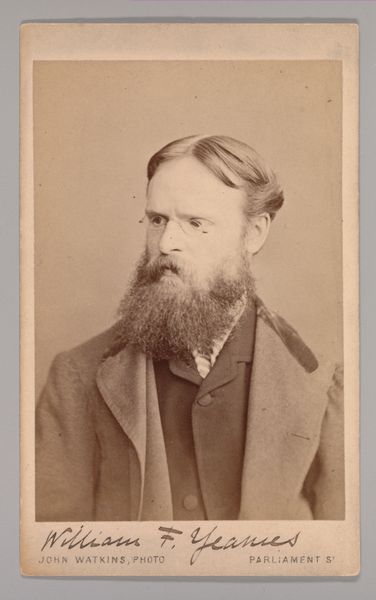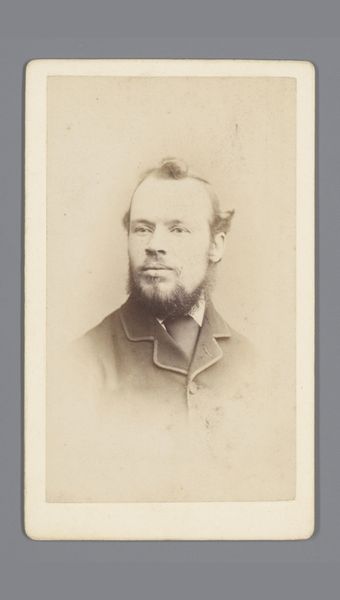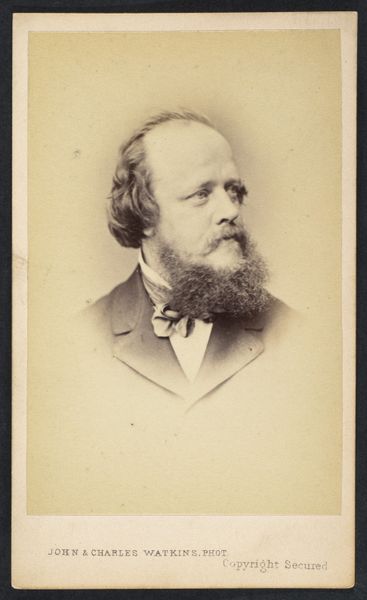![[James Clarke Hook] by John and Charles Watkins](/_next/image?url=https%3A%2F%2Fd2w8kbdekdi1gv.cloudfront.net%2FeyJidWNrZXQiOiAiYXJ0ZXJhLWltYWdlcy1idWNrZXQiLCAia2V5IjogImFydHdvcmtzLzI0MzNiNzJiLWEzMzctNGI4NC1hMjc0LWYyOWNhOTNlYmE0Ni8yNDMzYjcyYi1hMzM3LTRiODQtYTI3NC1mMjljYTkzZWJhNDZfZnVsbC5qcGciLCAiZWRpdHMiOiB7InJlc2l6ZSI6IHsid2lkdGgiOiAxOTIwLCAiaGVpZ2h0IjogMTkyMCwgImZpdCI6ICJpbnNpZGUifX19&w=3840&q=75)
daguerreotype, photography
#
portrait
#
daguerreotype
#
photography
#
classicism
Dimensions: Approx. 10.2 x 6.3 cm (4 x 2 1/2 in.)
Copyright: Public Domain
Curator: Here we have a daguerreotype portrait of James Clarke Hook, taken in the 1860s by John and Charles Watkins. It’s currently housed here at the Metropolitan Museum of Art. Editor: Ooh, intense. That sepia tone gives it a spooky, antique vibe, like I just pulled it out of a dusty trunk in the attic. It feels heavy with secrets. Curator: That intensity, I think, comes from the deliberate way photography was used at the time. The subject’s gaze, the formality of dress – it’s all very carefully constructed to project a certain image of power and authority. These early portraits really catered to notions of Victorian masculinity, especially in the light of contemporary ideas about self-expression and representation. Editor: Totally. You can practically smell the Old Boys’ Club in this picture. The beard, the brow – they're screaming "establishment." I bet he was a stickler for rules, the type to never remove his hat indoors and all that jazz. What do you make of the…smudge in the middle of his forehead? Is that some weird ghosting, or just bad photography? Curator: I imagine, the smudges and imperfections of a daguerreotype – rather than detracting – highlight the physical and chemical processes involved in creating an image at this time. As theorists such as Laura Mulvey and Griselda Pollock suggest, it’s also valuable to question how portraiture can shape perceptions of gender and societal hierarchies. We can then begin to see it more critically. Editor: Oh, absolutely. I bet this guy held some seriously archaic views. Still, there’s a vulnerability there too, like behind all that sternness, there’s a flicker of doubt in those eyes. It's also fascinating how every little detail is shown: flyaway hairs, skin details...it reminds me of life and art always mirroring each other. It’s both controlled and accidental. Curator: Indeed, the nuances we gather looking at the photograph echo larger tensions within Victorian society regarding class, status, and identity. Looking closely allows us to re-interpret accepted truths. Editor: Looking at this picture really is a good reminder that everyone is far more complex than any carefully curated image can reveal. So much is conveyed despite being a very simple image. Curator: Exactly, that is why critical evaluation of art, and photography as art, must continue.
Comments
No comments
Be the first to comment and join the conversation on the ultimate creative platform.
